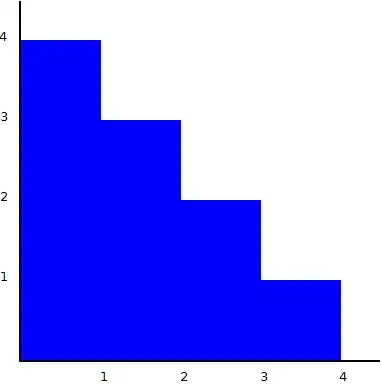I had this strange notion some time ago, and I recently wrote a blog post about it, as a mere curiosity. I don't really consider it a "serious" mathematical question; but out of interest, I wondered if someone on this site could shed some light on what principle might be underlying the idea.
Basically, I envisioned a "pseudo-triangle" consisting of two straight edges and one jagged "edge" (not really an edge, since it's jagged, but I'm calling it that anyway):

The above shape has 4 steps, its area is 10, and its perimeter is 16. Now let's increase the number of steps to 8:

This shape has an area of 9 and a perimeter of 16. Now, without me having to write out a formal proof, I think it's pretty clear that as the number of steps increases, the area will approach 8 while the perimeter will remain constant at 16. And the resulting shape will look like this:

Ultimately, there's nothing really "mysterious" about this; the shape above is not a triangle, and so it shouldn't be surprising that it doesn't have quite the same properties as a triangle. However, it does approach the same area as an analogous triangle; and, more to the point, it just seems odd.
Is there a concept in mathematics that describes this phenomenon (for lack of a better word)? That is, the effect of some kind of mathematical entity (e.g., a shape) converging to what resembles another entity but differs from it in a critically important and counter-intuitive way (in this case, having a completely different perimeter)?
If it seems that I'm having trouble articulating this question, that's because I am. But hopefully someone out there can see what I'm getting at and shed some light on the issue for me.